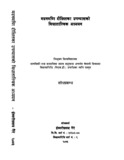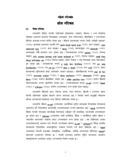Please use this identifier to cite or link to this item:
http://archive.nnl.gov.np:8080/handle/123456789/341Full metadata record
| DC Field | Value | Language |
|---|---|---|
| dc.contributor.author | POKHAREL, MONA | |
| dc.date.accessioned | 2019-03-24T08:08:50Z | |
| dc.date.accessioned | 2020-08-21T07:33:28Z | - |
| dc.date.available | 2019-03-24T08:08:50Z | |
| dc.date.available | 2020-08-21T07:33:28Z | - |
| dc.date.issued | 2019-03-24 | |
| dc.identifier.uri | http://103.69.125.248:8080/xmlui/handle/123456789/341 | - |
| dc.description.abstract | In the plant pathogenic fungus Cryphonectria parasitica, infection with hypovirus has been shown to alter various metabolic pathways. One such pathway is the synthesis of the polyamines, putrescine and spermidine, which are required for growth and development of the fungus. While the function of polyamines in various cellular processes has been extensively studied in other fungi, less is known about the effects of viral infection on polyamine metabolism. This study demonstrated the significantly higher accumulation of spermidine in virus-infected mycelium in comparison to uninfected tissue by thin layer chromatography. To understand the possible molecular mechanism for this differential accumulation, we investigated different catalytic enzymes and regulatory components involved in the biosynthesis of polyamines. The enzyme that catalyzes an initial (rate-limiting) step for polyamine biosynthesis is ornithine decarboxylase (ODC). Western blot analyses of ODC showed higher abundance in virus free than compared to the virus-infected strain. | en_US |
| dc.language.iso | en | en_US |
| dc.subject | pathogenic fungus, Cryphonectria parasitica | en_US |
| dc.title | INVESTIGATING VIRUS-MEDIATED DISRUPTION OF THE POLYAMINE METABOLISM PATHWAY IN THE PLANT PATHOGEN CRYPHONECTRIA PARASITICA | en_US |
| dc.type | Thesis | en_US |
| Appears in Collections: | 500 Natural sciences and mathematics | |
Files in This Item:
| File | Description | Size | Format | |
|---|---|---|---|---|
| COVER PAGE.pdf | 259.9 kB | Adobe PDF |  View/Open | |
| FINAL.pdf | 2.41 MB | Adobe PDF |  View/Open |
Items in DSpace are protected by copyright, with all rights reserved, unless otherwise indicated.